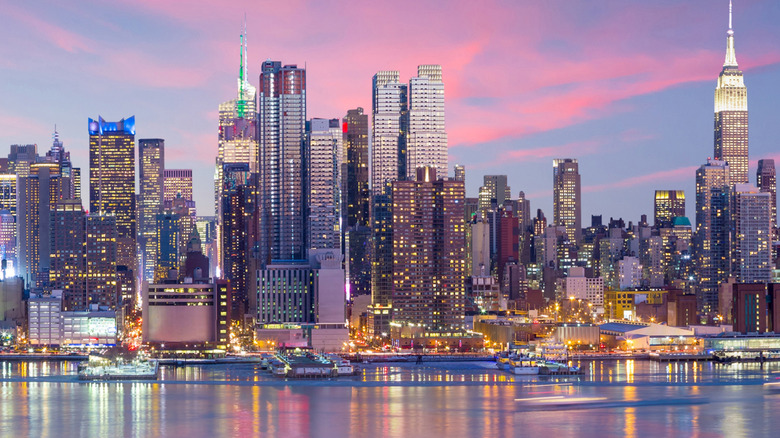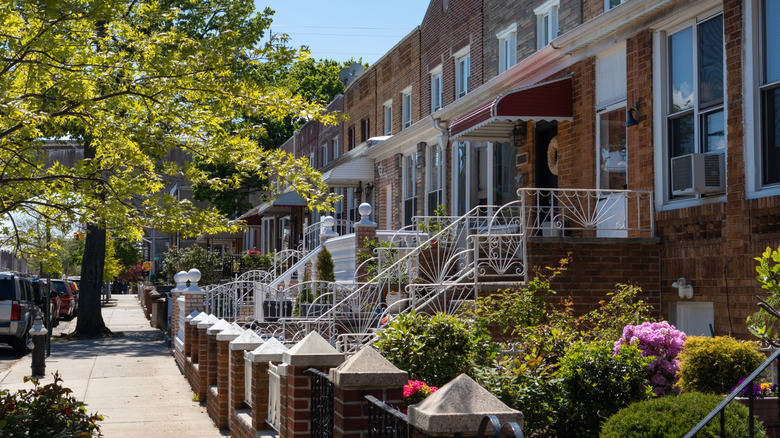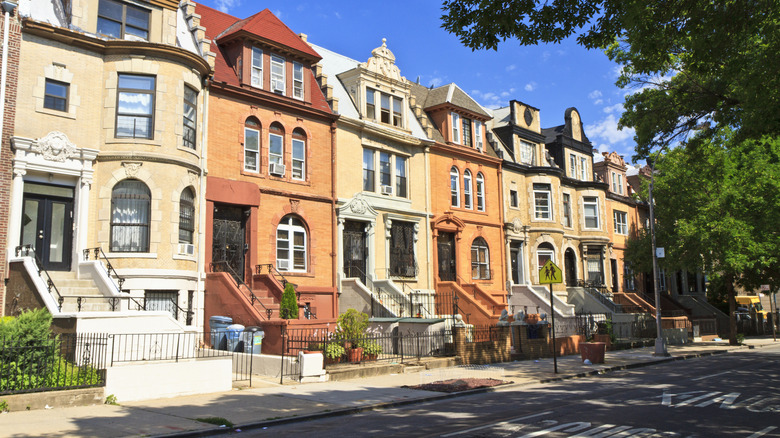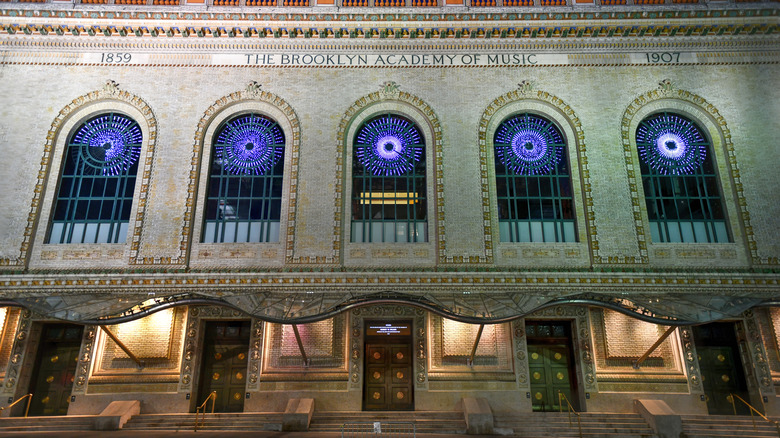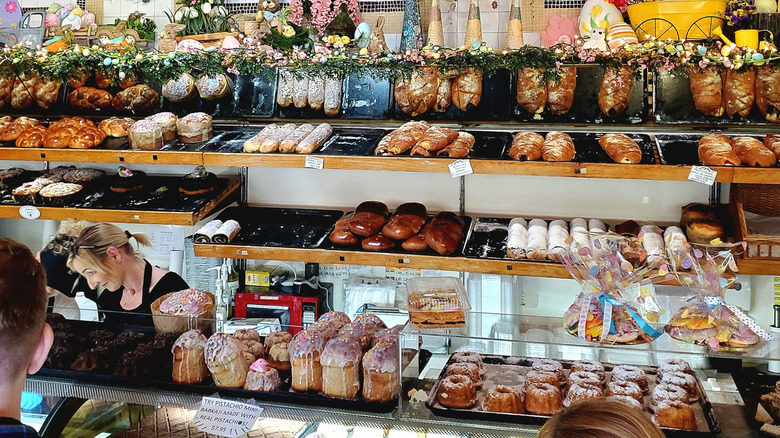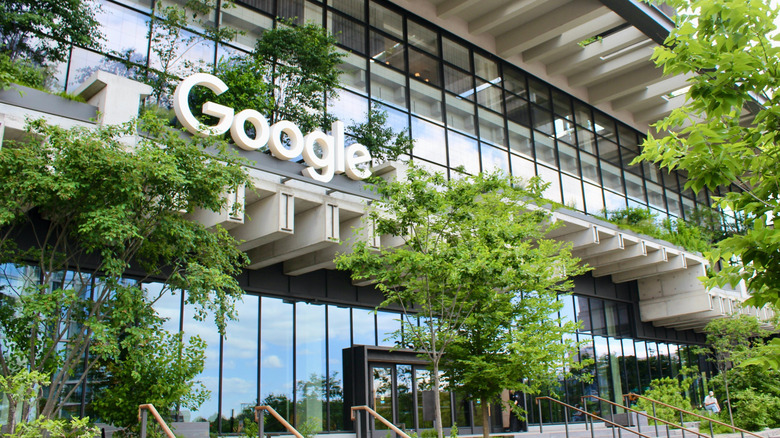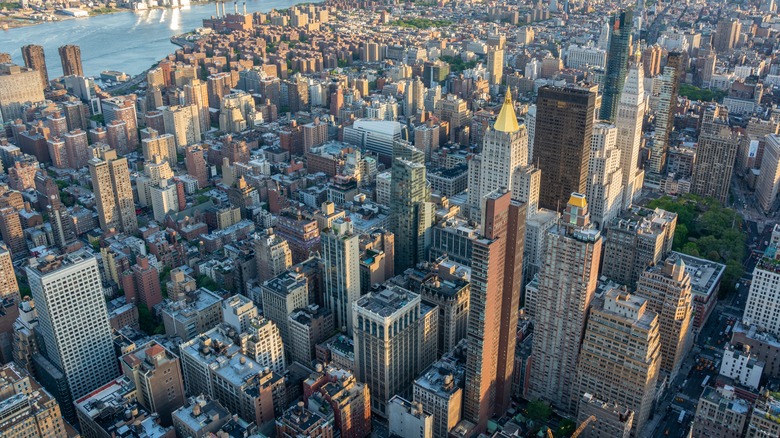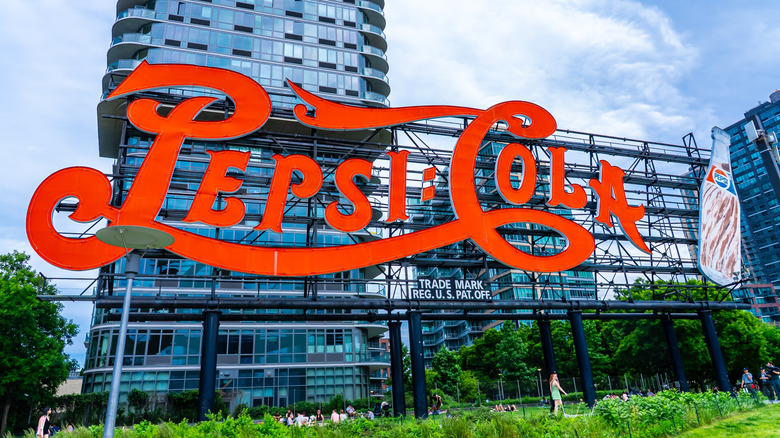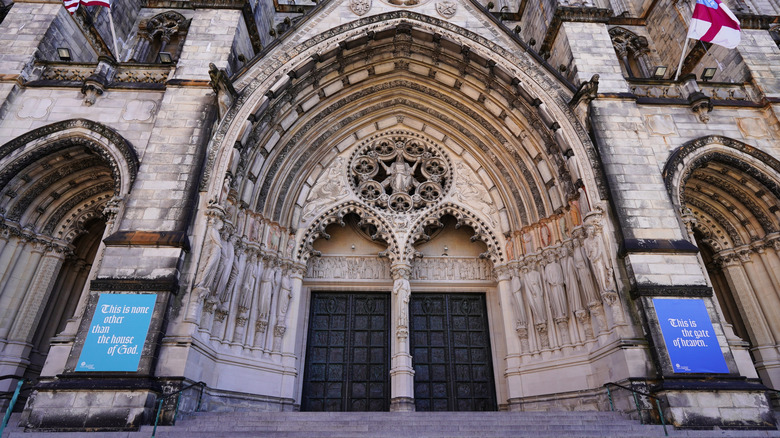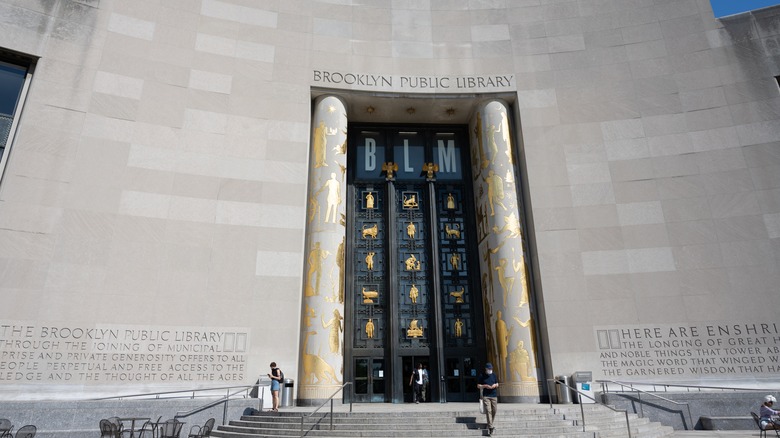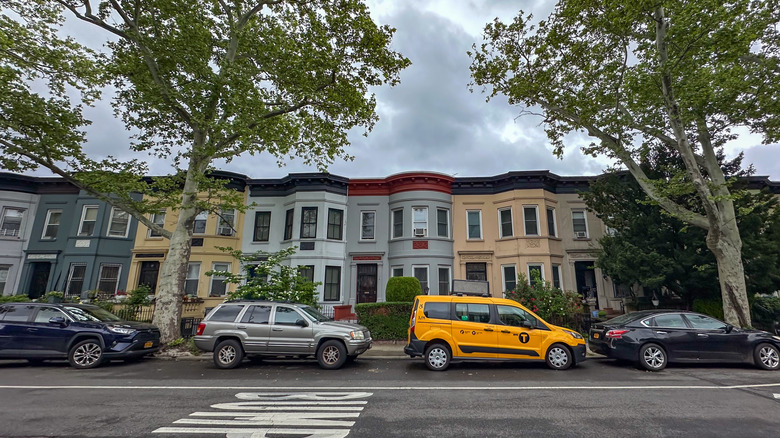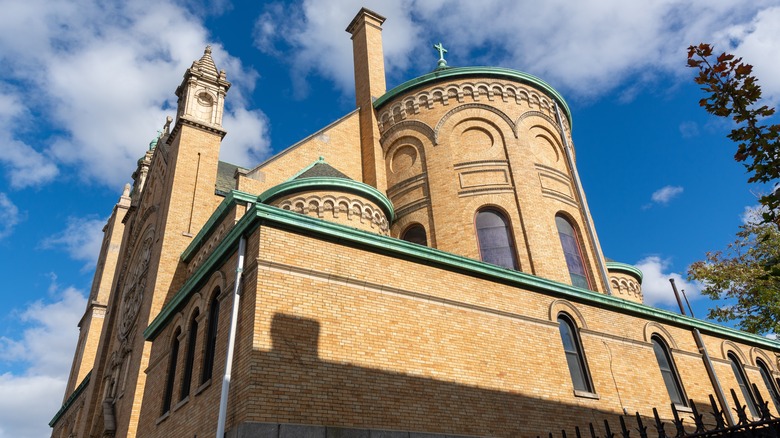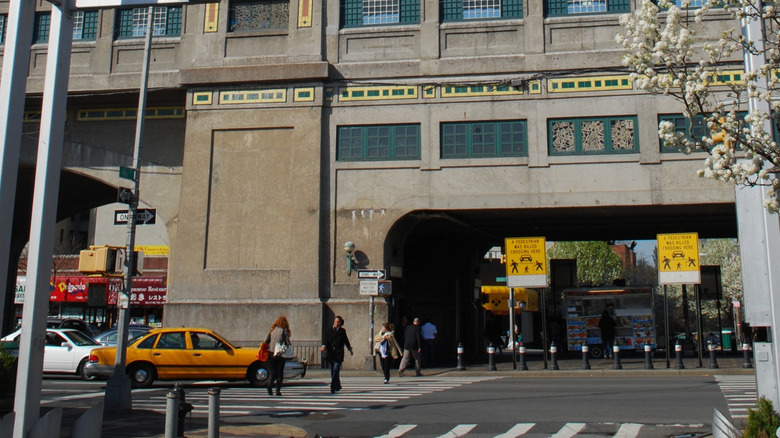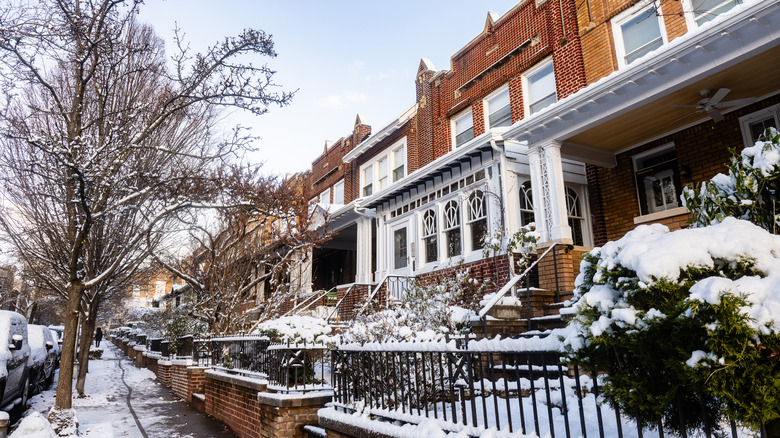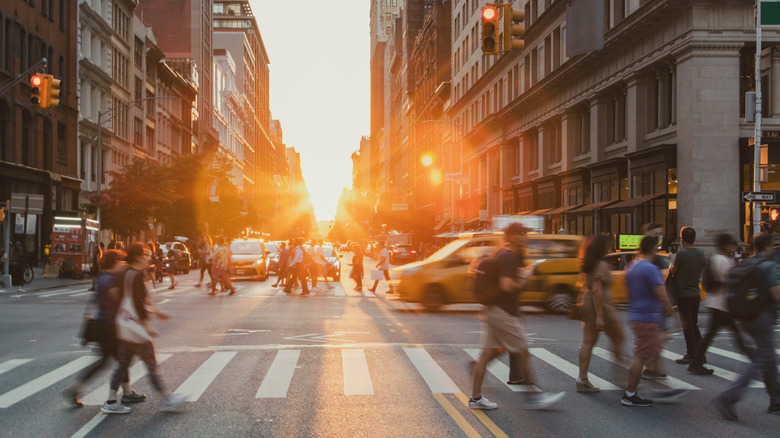These Vibrant, Trending New York City Neighborhoods Are Attracting Serious Attention In 2025
The most populous city in the U.S. by a long stretch, New York City has so much to offer. Travelers can find budget-friendly outdoor activities, serene islands to escape the hustle and bustle, and iconic movie spots that you can actually visit. The Big Apple is a metropolis of teeming masses, soaring buildings, and outsize personalities. But it is not uniform, more akin to a quilt of villages loosely stitched together.
Some have been popularized on the silver screen, like the West Village made famous by "Sex and the City," a show that was filmed there. Others have become notorious for their attractions and events — Coney Island is home to a throwback amusement park and an annual hot-dog eating contest. Looking at real estate blogs from Street Easy and Undivided, and as long-time residents of the Big Apple, we have identified the ones that are creating all the buzz in 2025.
Astoria
Look at Astoria on a map and you might note that, as NYC neighborhoods go, it is pretty big. This section of Queens is in the west of the borough, across from Roosevelt Island, and is blessed with long stretches of waterfront. Astoria has long had a strong Greek community, and wandering round its streets, travelers will see Greek churches, grocery stores, and businesses, and the blue-and-white flag of Greece fluttering outside homes. Astoria is largely residential, though in the area around the Brooklyn-Queens Expressway, it has a more industrial, gritty feel. But there is plenty for travelers to enjoy.
There are some cool coffee shops, like Under Pressure, which has two locations in Astoria, and the cozy Balancero Coffee Shop. Travelers will find great eating opportunities there, not only Greek, but also a good range of Middle Eastern. The main drags of Broadway, Steinway Street, Astoria Boulevard, and 31st Street offer plenty of options. Astoria also promises fine cultural diversions. Socrates Sculpture Park, out by the East River, is an outdoor space with some grand sculptural pieces. The Noguchi Museum is an indoor and outdoor repository of the sensuous pieces of Isamu Noguchi, and is a hauntingly beautiful place to spend some time. And the Museum of the Moving Image, an uncrowded, underrated but memorable museum, looks at the technical progress achieved in the creation of moving images.
Crown Heights
Long-term residents of New York might associate the name of this neighborhood with riots in 1991, but that now seems like a distant memory. Forming a vague rectangle in the northern half of Brooklyn, Crown Heights is a fascinating destination. It presents an eclectic mix of cultures, with large Caribbean and Orthodox Jewish populations living side by side. The neighborhood is also the epicenter of the annual West Indian Day Parade, held on Labor Day. During that huge celebration, Eastern Parkway explodes with color and sound as floats pass along the thoroughfare, pumping out soca and calypso beats, and food stalls along the route ensure onlookers can always find a bite to eat.
Eastern Parkway also has some important Jewish institutions. It is where to find the Chabad Lubavitch Headquarters, the Brooklyn Jewish Center, and the Jewish Children's Museum. The neighborhood is also home to the Brooklyn Children's Museum, the oldest children's museum in the world, founded in 1899. Many streets in Crown Heights have that quintessentially New York home, the brownstone, with some priced as high as $3 million. For a lively street with plenty of cool dining, wander down Franklin Avenue. You will find Ethiopian, Mexican, and French bakeries, as well as welcoming neighborhood bars.
Fort Greene
In 2023, "Time Out New York" crowned this the coolest neighborhood in New York City. It also earmarked it as one of the coolest neighborhoods in the world. That is certainly high praise, but spend some time in Fort Greene, and you will understand why it received such acclaim. For starters, the Brooklyn district has excellent transit connections, with many subway lines converging at Atlantic Av-Barclays Ctr station. This is also the spot to catch the Long Island Railroad at Atlantic Terminal. Elsewhere in the neighborhood, subway riders can find the C train and the G train.
There are many great arenas in Fort Greene, too. At the Barclays Center, the Brooklyn Nets and New York Liberty basketball teams have a home court, while the stadium stages regular concerts of global stars. A short walk away, the Brooklyn Academy of Music (locally known as BAM) is the borough's premier arts center, with music, theater, dance, poetry, film, and more. The Mark Morris Dance Group is based in Fort Greene, with its center on Lafayette Avenue. Green spaces include the hilly Fort Greene Park, designed by Frederick Law Olmsted and Calvert Vaux, where a soaring tower monument sits above a giant crypt where thousands are buried. Visitors looking for a bite to eat can peruse plenty of options along DeKalb Avenue, Lafayette Avenue, and Fulton Street.
Greenpoint
For many decades, this part of Brooklyn was a working-class neighborhood. Greenpoint was known as Little Poland, with large numbers of Poles moving there in the late 19th century and early 20th century, many working in factories and industrial jobs. Polish businesses sprang up in numbers, but times have changed. Remnants of Polish heritage still exist, but Greenpoint has transformed into something markedly different. Old warehouses that were centers of commerce and trade are now more likely to be filled with galleries or studios for artists.
The waterfronts, where goods arrived on the wharves, are dotted with gleaming new residential towers, some providing fabulous views of the Empire State Building. The dining scene has similarly shifted. People no longer come to the neighborhood exclusively in search of authentic pierogi and beetroot soup, but instead seek out Vietnamese, Mexican, and even a place opened by the co-founder of Noma, the Copenhagen restaurant that was named the best in the world five times. Away from the waterfront, old brownstones and townhouses persist, and the neighborhood appears as it did for many years.
Greenwood Heights
This neighborhood in the west of Brooklyn is named for the stunning Green-Wood Cemetery. Wander around its main residential areas, and you will find old brick apartment buildings, pretty terraced houses, and small independent stores. Nearer to the water, the neighborhood changes, and a large section around 2nd and 3rd avenues — former factories and warehouses — has now become a popular shopping enclave known as Industry City. Any trip to this neighborhood has to take in Green-Wood Cemetery. While it is primarily a resting ground for the deceased, it is also an arena for much more. It first opened in 1838, and within a few decades, it became a tourist attraction, with visitors arriving to see sculptures and take carriage rides.
The cemetery is almost 500 acres, with valleys, ponds, hills, and a wealth of mausoleums and statues. Those buried there include Jean-Michel Basquiat, Leonard Bernstein, and generals from the Civil War. Visitors come to see their graves, while others drop by to watch an outdoor film screening, attend a Moth spoken-word event, or marvel at the stunning cherry blossoms. Greenwood Heights is also home to Luigi's Pizza, one of the best places to get a slice in New York, and Melody Lanes bowling alley.
Hudson Square
This former industrial neighborhood in Manhattan often falls under the shadow of its more established neighbors, SoHo, TriBeCa, and the West Village. But Hudson Square, which is a very compact area bounded roughly by Houston Street to the north and 6th Avenue to the east, is now a very livable area. On the western fringe of the neighborhood, tourists will find the wide sweep of the Hudson River, while on land, Hudson River Park provides a green space in which to enjoy the environs. Businesses have moved in, with The Walt Disney Company opening its New York headquarters in late 2024 at 7 Hudson Square, and Google unveiling its New York hub on Washington Street.
Spring Street Park was renovated in 2018, while Freeman Plaza East, overhauled in 2021, has free WiFi and lots of public art. And in 2025, the neighborhood received $4.5 million from New York State toward upgrades that will continue this revitalization work. Projects that will benefit from the funds include the NYC Fire Museum and the Hudson Square Color Walk. Culture buffs who want to catch independent movies can head to Film Forum, a champion for alternative films since 1970.
Kips Bay
This enclave on the east side of Manhattan has some top-rate medical facilities, but also feels low-key and residential. Around the time of American independence, this was the site of a British invasion, so it took some more years for the area to get a formal name. That happened when the Dutch settler Jacobus Hendrickson Kip bought land in this part of the island to build a farm. He called it Kips Bay because it was so close to the East River. Though the farm was demolished in the 1850s, the name stuck.
Today, Kips Bay has busy avenues that stretch north-south — that is where to find the numerous hospitals in the neighborhood — and quieter residential streets that run east-west and that have towers and low-rise walk-ups with brick facades. A number of consulates are dotted around the area due to the proximity of Kips Bay to the United Nations. One place not to miss in the neighborhood is the Morgan Library & Museum. J. Pierpont Morgan's Library looks like it has been lifted from the pages of a historical tome.
Long Island City
Like Astoria, the views of Manhattan across the East River from this Queens neighborhood are spellbinding. Long Island City might sound like it is part of Long Island, but the district is sandwiched between Greenpoint to the south and Astoria to the north. Long Island City is a big hit with people working in New York who like the convenience of a quick commute into Manhattan — train stations are only one or two stops away from Manhattan. Like other waterfront areas of New York, this was an industrial hub, where wharves in the river accepted boats that delivered goods. But Long Island City has long since moved past its former self, and now finds itself injected with a new lease of life.
Gantry Plaza State Park, right on the East River, promises some of the best Manhattan skyline views you will get anywhere in the city, and thanks to its location, you can see up and down the island. Inland, MoMA PS1 is a former New York City public school turned art museum. And now the neighborhood is a magnet for foodies in search of a mix of global cuisines, with Peruvian, Sichuanese, Tibetan, and Mexican all available. Vestiges of L.I.C. from yesteryear persist. Warehouses are still dotted around the neighborhood, and the classic, bright-red, retro Pepsi-Cola sign remains a local landmark, set at the northern end of Gantry Plaza State Park.
Morningside Heights
This neighborhood in Upper Manhattan wraps itself around Columbia University. That institution of learning might be the most famous single place within Morningside Heights, and many businesses and residences in the area rely on it for their livelihood. The campus is certainly a pretty spot, with green spaces and stately buildings, not to mention a reputation for academic rigor. But elsewhere in Morningside Heights, visitors will find much to delight them. Riverside Park lines the entire western edge of the neighborhood, a wash of greenery where locals can escape city life.
This is where to find the General Grant National Monument. A grand structure befitting the former president, Ulysses. S. Grant and his spouse, it is the largest mausoleum in the country. Next door, Sakura Park is a big springtime draw for its blooming cherry blossom trees. Further inland, Morningside Park also offers a sense of escape. There are also some cool eating spots in this neighborhood, though none is perhaps quite as storied as the Hungarian Pastry Shop. First opened in 1961, it usually has lines around the corner and serves delectable pastries, strudel, cakes, cookies, and more. Grab a table outside and savor your sweet treat while admiring the Gothic masterpiece cathedral St. John The Divine — it is across the street.
Prospect Heights
A small grid of streets in central Brooklyn, Prospect Heights, punches above its weight. At the south end of the neighborhood, a handful of sights draw visitors, especially on weekends. Grand Army Plaza is a large traffic circle anchored by a monument reminiscent of Paris' Arc de Triomphe. In June 2025, it was fully reopened following a multimillion-dollar restoration. Just below it, Prospect Park unfurls across a series of green spaces, waterways, playgrounds, and even a skating rink.
Also by Grand Army Plaza, the Central Branch of the Brooklyn Public Library has a striking facade, with literary figures in gold leaf framing the portico entrance. The Brooklyn Botanic Garden is a premier horticulture space in the borough, while the Brooklyn Museum holds a similar reputation in the field of art. Elsewhere in Prospect Heights, visitors will find a breezy charm in the tight lattice of streets, some with new apartment towers, others with old brownstones. There is also some fabulous dining along the main drags of Vanderbilt Avenue and Washington Avenue.
Prospect Lefferts Gardens
The name of this neighborhood in Brooklyn is an amalgam of sorts. The Prospect comes from the beautifully wooded Prospect Park, the large park to the west (Prospect Lefferts Garden is just south of Prospect Heights). The Lefferts part refers to the historic district that anchors the neighborhood. Lefferts Manor was named for the Lefferts family, landowners who earmarked a section of their farm for use in residential development, with the stipulation that the homes be restricted to single-family houses. The historic district was set up in 1893, and soon homes in Colonial, Tudor Revival, and Romanesque styles started to appear.
Wandering around the streets with these homes feels like stepping back in time, with some blocks seeming like they belong in the leafy suburbs of southern England, the brick houses topped with slate roofs. The Gardens in the name refers to the nearby Brooklyn Botanic Garden. The neighborhood has a large Caribbean and African community, and businesses that cater to them, like Labay Market on Nostrand Avenue. Also on Nostrand Avenue, and one block over on Rogers Avenue, a number of cool bars, cafes, and restaurants welcome clients. Rogers Avenue is also where to find the intimate performance venue, The Owl Music Parlor.
Ridgewood
Next to the edgy and trendy neighborhood of Bushwick, this Queens district has a strong community feel to it. This really does feel like a village, with low-rise buildings and even a historic district where brick row homes were inhabited by German immigrants. While not as strong as that of Bushwick, the art scene in Ridgewood is firmly entrenched. Ridgewood Open Studios, for instance, regularly stages shows by new and emerging artists. And Grand Central Atelier is an institution for anyone seeking education in the art of painting, with workshops, evening classes, and longer programs.
Ridgewood also boasts a lively dining scene. The actor Jeremy Allen White, who plays a chef in the series "The Bear," raves about Rolo's, which serves food grilled over a wood fire. Also in the neighborhood, foodies will be able to track down an Indonesian cafe, an old-style German bar, a Bosnian eatery, and a Venezuelan sandwich joint.
Sunnyside
A number of major thoroughfares slice through this Queens neighborhood. The Long Island Expressway, Brooklyn-Queens Expressway, and Queens Boulevard all wind their way through the district, and yet Sunnyside manages to maintain a serene ambience. This hood is also very well connected for commutes into Manhattan, served by the 7 train. The neighborhood was formed by a strong Irish population in the early 1900s, when an area called Sunnyside Gardens was formed. That historic area persists, as does the imprimatur of the Irish, but now the neighborhood is more diverse.
Visitors will still find Irish businesses and places to have a drink, but there are also Romanian and Korean options. South Americans often congregate at Bar 43, a watering hole that bills itself as the "home of soccer in Queens." They might also gravitate to I Love Paraguay, a restaurant that celebrates the cuisine of that landlocked nation. At the edge of the neighborhood, Calvary Cemetery is a huge burial ground with stunning views of Manhattan.
Windsor Terrace
This tight band of streets sits between Prospect Park and Green-Wood Cemetery in Brooklyn. There is almost a suburban atmosphere to Windsor Street, with most of the blocks overwhelmingly residential. The neighborhood takes its name from a town in England, home to a royal castle. The area was once agricultural land that belonged to John Vanderbilt, before being sold off in pieces when a small settlement began to form.
In the 1950s, a major road called the Prospect Expressway sliced through the neighborhood, but overpasses and bridges over the route helped to keep the two sides of Windsor Terrace feel whole. The main businesses are located on Prospect Park West and Prospect Avenue, but apart from that, most of the streets are very quiet, the kind of place where neighbors' kids hang out with each other, and community spirit is finely woven. Residents often hang out to chat in independent coffee shops or sit on their stoops to socialize. Windsor Terrace really is a hidden gem.
Methodology
To find the most vibrant neighborhoods in New York, we consulted with the real estate site Street Easy, which detailed the areas that were experiencing the most growth in searches over the two years leading up to 2025. We also looked at the real estate blog Undivided for its picks. Finally, we used our own knowledge as New York City residents to support any choices. After finalizing the list, we focused on the highlights of each neighborhood, pulling on our own experiences in each of them to flesh out the best attributes of each.
